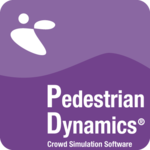Description

DMG MORI Virtual Machine

Sim3D
Comprehensive Overview: DMG MORI Virtual Machine vs Sim3D
DMG MORI is a reputed global manufacturer of machine tools and integrated technology for manufacturing, offering a range of advanced technological solutions. Among their innovative products are the Virtual Machine and Sim3D software solutions. Below is a comprehensive overview of these products:
a) Primary Functions and Target Markets
DMG MORI Virtual Machine:
-
Primary Functions:
- The Virtual Machine serves as a precise digital twin of DMG MORI's physical machining centers. It allows users to simulate machining processes in a virtual environment before actual production takes place. This helps in optimizing machining strategies, detecting potential collisions, and ensuring that the NC code is error-free.
- It is used for verifying machining programs, optimizing setup and process sequences, and ensuring overall efficiency and quality in production.
-
Target Market:
- Primarily serves industries that require high-precision machining, such as aerospace, automotive, medical device manufacturing, and heavy machinery.
- The Virtual Machine is targeted at manufacturers and CNC operators who are looking to optimize production times and ensure high quality without the risk of damaging expensive machinery.
Sim3D:
-
Primary Functions:
- Sim3D is focused on offering advanced 3D simulation capabilities for complex manufacturing scenarios. It enables manufacturers to simulate and validate CNC machine operations, providing detailed visualizations and analyses of machine behavior, tool paths, and component handling.
- It helps in reducing lead time, optimizing operational efficiency, and improving the accuracy of CNC programs.
-
Target Market:
- Targets similar industries as the Virtual Machine, including sectors requiring high precision and efficiency.
- Ideal for environments where complex machining and automation processes are customary.
b) Market Share and User Base
- DMG MORI is a renowned player in the machine tool industry; however, precise market share details specific to Virtual Machine and Sim3D software can be challenging to determine without access to proprietary company information or recent industry reports.
- Generally, DMG MORI’s presence is strong and growing within the sectors of advanced manufacturing and digital twin technologies, competing with other industry stalwarts such as Siemens and Hexagon.
- The user base tends to involve medium to large manufacturing enterprises globally that depend on sophisticated machine tools and need high-end simulation capabilities.
c) Key Differentiating Factors
-
Integration with Physical Machinery: The DMG MORI Virtual Machine offers seamless integration with its physical counterparts, creating a direct correspondence between virtual and physical parameters, which enhances precision and reliability in simulations.
-
Proprietary Ecosystem: Both solutions benefit from DMG MORI's proprietary machine data, ensuring that simulations are highly accurate and tailor-made for their machines compared to generic simulation tools.
-
Collaboration with Software Leaders: While Virtual Machine and Sim3D have been developed with significant contributions from software specialists, their direct collaboration with a major CNC machine producer like DMG MORI provides them an edge in terms of practical applicability and machine-specific optimizations.
-
Customization and Usability: Users often cite the customization options and user-friendly interfaces provided by these systems, allowing for easier adoption and faster time-to-effectiveness than some more generic simulation platforms.
The strategic advantage of DMG MORI’s software offerings lies in their deep integration with actual manufacturing processes, offering a reliable means to bridge the gap between concept and production, and enabling industries to move towards more efficient and error-free manufacturing paradigms.
Contact Info

Year founded :
Not Available
Not Available
Not Available
Not Available
Not Available

Year founded :
2019
Not Available
Not Available
Tunisia
http://www.linkedin.com/company/sim-3d
Feature Similarity Breakdown: DMG MORI Virtual Machine, Sim3D
When comparing the DMG MORI Virtual Machine and Sim3D, it is important to understand their core functionalities and how they cater to users in terms of features and user interface. Both are designed for simulating machining processes, but there are key similarities and differences.
a) Core Features in Common
-
Machining Process Simulation:
- Both platforms offer precise simulations of the machining process that allow users to validate tool paths and motions before actual machining.
-
Collision Detection:
- They both include real-time collision detection to prevent costly errors and machine downtime.
-
Tool Path Verification:
- Both offer tools for verifying the tool path to ensure accuracy and optimize machining operations.
-
3D Visualization:
- Both products provide 3D visualization to give users a comprehensive view of machining operations, enabling better planning and understanding of the machining environment.
-
Integration with CAD/CAM:
- Integration with CAD/CAM systems enabling seamless transition from design to simulation is a core feature.
b) User Interface Comparison
- DMG MORI Virtual Machine:
- Typically, the interface is designed to closely resemble the control panel of DMG MORI machines. This helps machinists who are familiar with DMG MORI equipment to adapt quicker.
- It focuses on providing a realistic operational environment with detailed machine models and graphics.
- Sim3D:
- This software may lean towards a more generalized or cross-platform interface since it's aimed at a more diverse range of machinery beyond just one brand.
- The user interface is often designed to be intuitive, accommodating different levels of user expertise, from beginners to advanced users.
c) Unique Features
-
DMG MORI Virtual Machine:
- Machine-Specific Features: As it is tailored specifically for DMG MORI machines, it includes specific functionalities that optimize the performance and capability of these machines.
- Real-machine Kinematics and Dynamics: Provides highly detailed simulations that take into account the physical characteristics and constraints of DMG MORI machines.
-
Sim3D:
- Wider Machine Compatibility: It is built to work with a broader range of machine types and brands, offering more versatility if a facility uses different CNC machines.
- Flexible Customization: Often offers more diverse customization options to adapt the software for different applications and industries.
Each product has its strengths, and the choice between them would depend largely on the specific needs of the user or organization, such as the types of machines in use and the level of simulation detail required.
Features

Not Available

Not Available
Best Fit Use Cases: DMG MORI Virtual Machine, Sim3D
DMG MORI Virtual Machine and Sim3D are sophisticated tools designed to enhance the precision, efficiency, and productivity of machining processes through advanced simulation and digital twin technologies. Here's how they best fit various use cases:
DMG MORI Virtual Machine
a) Best Fit for Businesses or Projects:
- Manufacturing Enterprises: Large-scale manufacturers and precision engineering firms can benefit from the DMG MORI Virtual Machine for its ability to simulate complete machining processes, helping to optimize CNC programs before actual production.
- Aerospace and Automotive Industries: These industries rely on high precision and complex geometries, where the Virtual Machine can help validate production plans and reduce the risk of errors.
- Custom Manufacturing Projects: Businesses involved in bespoke manufacturing or those that require frequent design changes can use this tool to simulate different scenarios and validate toolpath strategies quickly.
- Tool and Die Makers: The machining of complex molds and dies requires precision and perfect execution, where a virtual simulation can prevent costly errors.
b) Best Scenarios for Use:
- Prototype Development: When developing prototypes, reducing trial and error in physical environments by simulating machining processes can significantly cut down costs and time.
- Training and Education: Virtual Machines are valuable for training new operators, allowing them to understand machine behavior and CNC programming without the risk of damaging actual equipment.
- Complex Toolpath Verification: For businesses that deal with intricate toolpaths, this tool ensures feasible and error-free machining strategies.
Sim3D
b) Preferred Scenarios for Use:
- 3D Optimization and Planning: Ideal for businesses that thrive on enhancing productivity through layout planning and workflow optimization. Sim3D can model and optimize the entire factory floor or work cell to improve throughput and efficiency.
- Flexible Manufacturing Systems: If a business heavily involves automation and robotics, Sim3D can simulate operations dynamics, helping design flexible systems that adapt to change quickly.
- Production Line Simulation: Companies working with complex productions with many variables can use Sim3D to analyze and optimize the assembly line, resource management, and operation sequences.
- Product Lifecycle Management: Industries that focus on the complete lifecycle of products from design to decommissioning will find value in Sim3D's ability to offer a holistic view of production and enable smooth transitions between phases.
Catering to Different Industry Verticals and Company Sizes
-
Industry Verticals:
- Automotive, Aerospace, and Defense: Both Virtual Machine and Sim3D offer robust solutions for simulating complex parts and heavy machinery, which are common in these industries.
- Medical Device Manufacturing: These tools help in ensuring the precision manufacturing required for medical components by simulating the entire machining process and optimizing setups.
- Consumer Goods: Rapid adaptation to market changes with frequent design updates can be better managed through simulation to minimize downtime and errors.
-
Company Sizes:
- Small and Medium Enterprises (SMEs): These tools provide SMEs with the technological leverage to compete by minimizing wasted resources and optimizing production efficiency without substantial capital expenditure.
- Large Enterprises: For large corporations, Virtual Machine and Sim3D offer comprehensive solutions that can be integrated into existing large-scale operations, enhancing the efficiency of well-established supply chains and production lines.
In summary, DMG MORI's Virtual Machine and Sim3D offer powerful simulation capabilities suitable for a range of manufacturing contexts, helping businesses reduce risk, improve efficiency, and enhance precision, applicable across various industries and adaptable to different business scales.
Pricing

Pricing Not Available

Pricing Not Available
Metrics History
Metrics History
Comparing undefined across companies
Conclusion & Final Verdict: DMG MORI Virtual Machine vs Sim3D
Conclusion and Final Verdict for DMG MORI Virtual Machine vs. Sim3D
When evaluating DMG MORI Virtual Machine and Sim3D, it's important to consider several factors including functionality, ease of use, integration capabilities, pricing, and the specific needs of your operations. Here's a comprehensive analysis to help you decide which product offers the best overall value and what considerations you should keep in mind.
a) Overall Best Value
DMG MORI Virtual Machine tends to offer the best overall value for users who are looking for a highly specialized tool tailored specifically for DMG MORI CNC machines. Its deep integration with DMG MORI equipment makes it ideal for companies heavily invested in this brand. For those who prioritize machine-specific simulation with precise collision detection and toolpath verification, DMG MORI Virtual Machine stands out.
On the other hand, Sim3D provides excellent value for those seeking a versatile and widely applicable simulation tool. It caters to a broader range of CNC machines and is suitable for users who work with multiple brands or need a more general-purpose solution. Sim3D is highly valued for its adaptability and is better suited for diverse manufacturing environments.
b) Pros and Cons
DMG MORI Virtual Machine:
- Pros:
- Tight integration with DMG MORI's CNC machine controls, ensuring accurate simulations.
- Advanced machine-specific features for realistic verification, reducing risk of errors during actual production.
- Strong support and updates from a manufacturer specialized in these machines.
- Cons:
- Less versatile in accommodating non-DMG MORI machines.
- Potentially higher cost and investment if heavily integrated into existing operations without DMG MORI machinery.
- Steeper learning curve for operators not familiar with DMG MORI systems.
Sim3D:
- Pros:
- High versatility and adaptability to multiple machine brands.
- User-friendly interface with robust features for a wide audience.
- Cost-effective for companies with a diverse range of equipment.
- Cons:
- May lack depth in certain machine-specific features provided by more specialized software.
- Less optimal for users who require deep integration with DMG MORI systems.
- Possible reliance on third-party updates and support.
c) Recommendations for Users
-
Evaluate Your Equipment: If your operations primarily involve DMG MORI machines, strongly consider the DMG MORI Virtual Machine for its specialization and optimized functionality. However, if you are operating a range of CNC machines, Sim3D might offer broader benefits.
-
Consider Integration Needs: Those with existing systems heavily aligned with DMG MORI will find the integration with their machines more seamless with their Virtual Machine software. Organizations using a mix of different brands might benefit more from Sim3D’s flexibility.
-
Budget Considerations: Calculate the total cost of ownership, including potential training and implementation expenses. While DMG MORI Virtual Machine may have a higher initial investment, its specific features could reduce longer-term production costs by minimizing machine errors.
-
Seek Feedback and Trials: Engage with feedback from other users in your industry and request trial versions if possible. This firsthand experience will help identify which software aligns best with your operational workflow and technical requirements.
In conclusion, the choice between DMG MORI Virtual Machine and Sim3D largely depends on your specific operational needs, existing equipment ecosystem, and whether you favor specialization over versatility. Each software has its unique strengths, and your decision should align with your strategic manufacturing goals.
Add to compare
Add similar companies




